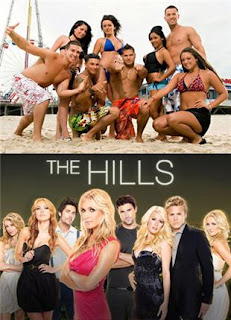Theories of Uniform Influences - Despite coming from various social situations, members of the mass society all have a similar human nature and are alike in terms of emotions and outlook. The media present messages to the members of the mass society who in turn perceive them more or less uniformly. The stimuli lead individuals to respond in a somewhat uniform manner, creating similar changes in thought and in actions in members of the mass society as a whole.
Theories of Selective Influences - The messages that the media present are received and interpreted differently based on the individual's variation of habits. Therefore, the effects of media are not uniform, powerful or direct but selective and limited by individual psychological differences.
Disinhibition Theory - Over time, after seeing behaviors that you once had inhibitions against, you may lose your inhibitions and become more likely to engage in these behaviors. This is a behavioral theory.
Desensitization Theory - The more you see something the less sensitive you are to these certain images/issues/topics. This is an attitudinal theory.
Sensitization Theory - Viewers will react so strongly to seeing certain mediated content that they will be traumatized by it and become more sensitive to such images/issues/topics. This is an attitudinal theory.
Modeling Theory - An individual perceives a form of behavior described or portrayed by a character in media content, judges it to be attractive and potentially useful, and reproduces the behavior in a personally relevant situation (if the reproduced behavior proves useful or effective, the individual is rewarded). This is a behavioral theory.
Cultivation Theory - Heavy television viewers tend to use the television stories to construct their own views of reality and the world. The more media we are exposed to, the more our views of the world will come to resemble the media worldview. Sometimes, heavy television viewers will develop and believe in mean world syndrome (the more violence that is seen, the more the viewer believes the world is scarier/meaner than it actually is). This is an attitudinal theory.
Reality television gives false illusions to what life is really like. The casts live in extraordinarily unrealistic ways and often the setups are staged and the story is planned.
Socialization Theory - The amount of television we watch can influence our view of the world and the role we play in said world. For children, television is their window to the world of adulthood and in a lot of ways they grow up more quickly based on media intake. Socialization effects are strongest on frequent viewers who have few alternatives for information and lack relevant life experience.
Uses and Gratifications Theory - This theory is based on the assumptions that the audience is active and the media are used to meet needs. While the media competes for our attention, people have certain needs (associated with age/background/personality) that they try and fulfill through their mass media selection. There are four areas of gratification in media for audiences - escapism, personal relationships, personal identity, and surveillance. This is an attitudinal theory.
Today there are thousands upon thousands of magazine, music, and television options for audiences to choose from in order to fulfill whatever need hits them at any time.
Agenda-Setting Theory - News media gives subtle emphasis to certain stories and topics, that emphasis then has the ability to raise readers'/veiwers' awareness about those topics. While the media does not tell us what to think, it does tell us what to think about (although people may feel differently about any given issue, most people feel that the same issues are important). One way an agenda can be set is through framing (certain aspects of a situation or person are highlighted and selected and those features are given more attention then when those features are not prominent). This is an attitudinal theory.
While both Newsweek and Time Magazine used the same photo of OJ Simpson, they have been edited in very different ways giving readers two very different opinions of the same man and the same story.
Reinforcement Theory - All people possess mental collections (schemas) of possible behaviors that can be used in various situations, if they come into contact with mediated content that coincides or is similar to their schema that schema is reinforced. This is an attitudinal theory.
Schema Theory - Every individual holds mental schemas based on past experiences. Information processing skills allow individuals to go beyond the information actually presented and draw inferences about people/events that are congruent with the previously formed schemas. In mass media the activation of the schema can be triggered by some particular information in the TV program/article/website or by the content of certain formal features of that particular medium. Individuals can also develop new schemas and scripts from the media. A script is a schema about an activity (from watching certain media we teach ourselves how to deal with a given situation). There are three components to a script: the exposition (introduction of characters and setting), the complication (problem or obstacle), and the resolution (problem or obstacle is overcome)





